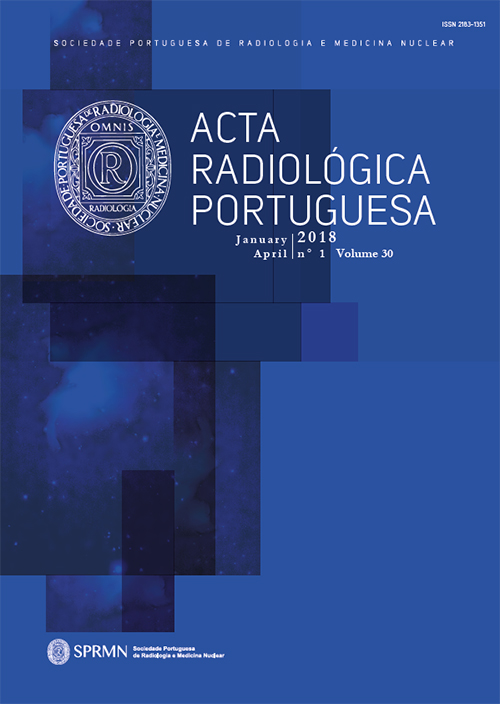Infarction of torsed lipomatous appendage of the falciform ligament
DOI:
https://doi.org/10.25748/arp.13327Resumo
A 46-year-old male presented with sudden onset of severe pain in the right upper quadrant. On abdominal examination, a well-defined point of focal tenderness and a subtle lump were evident. Abdominal x-ray, ultrasound and laboratory tests were unremarkable. An abdominal CT scan was then requested, showing fat stranding and a torsed appearance of a lipomatous appendage of the falciform ligament, compatible with infarction. The pathophysiology of this entity is similar to the more commonly seen omental infarction and epiploic appendagitis, encompassing the spectrum of intra-abdominal focal fat infarction that has recently been described.
Referências
(1) Swienton D, Shah V. Infarction of a fatty appendage of the falciform ligament - a case report. EuroRad Online 11 April 2013. Available from: http://www. eurorad.org/case.php?id=10799. doi: 10. 1594/EURORAD/CASE.10799
(2) Maccallum C, Eaton S, Chubb D, Franzi S. Torsion of fatty appendage of falciform ligament: Acute abdomen in a child. Case Rep Radiol 2015;2015:293491
(3) Uyttenhove F, Leroy C, Nzamushe Lepan Mabla JR, Ernst O. Torsion of a fatty fringe of the falciform ligament, a rare cause of right hypochondrial pain. Diagn Interv Imaging 2013;94:637-9
(4) Van Breda Vriesman AC, Lohle PN, Coerkamp EG, Puylaert JB. Infarction of omentum and epiploic appendage: diagnosis, epidemiology and natural history. Eur Radiol 1999;9(9):1886-92
Downloads
Ficheiros Adicionais
Publicado
Edição
Secção
Licença
CC BY-NC 4.0


